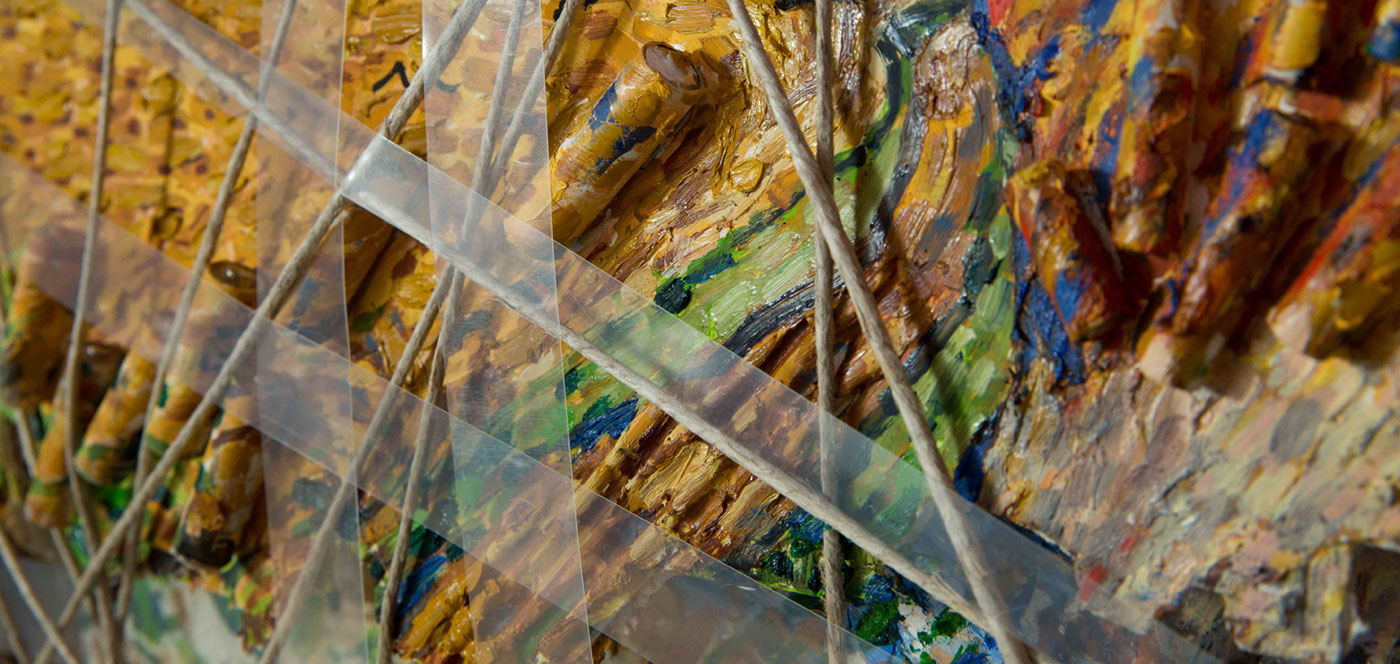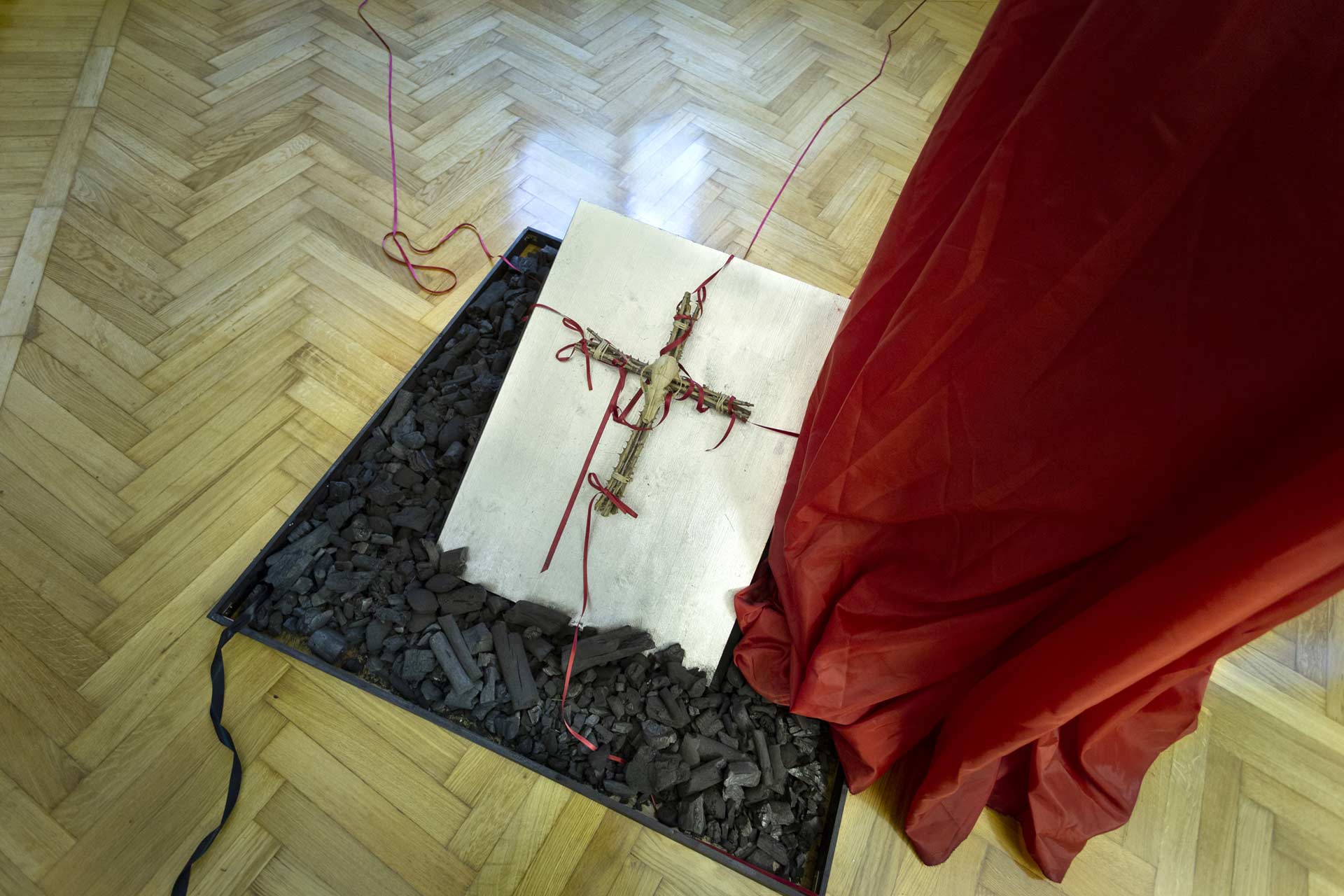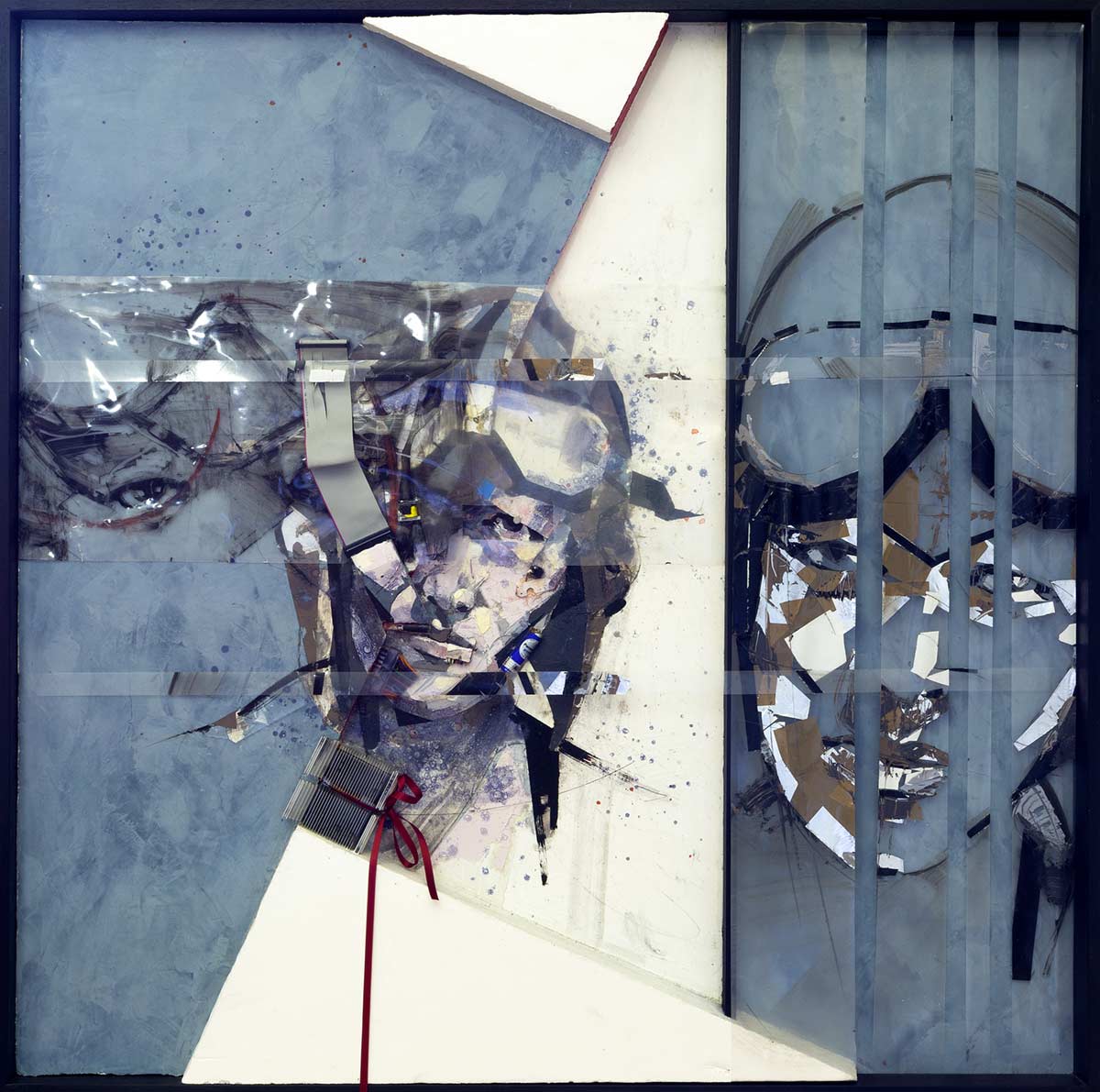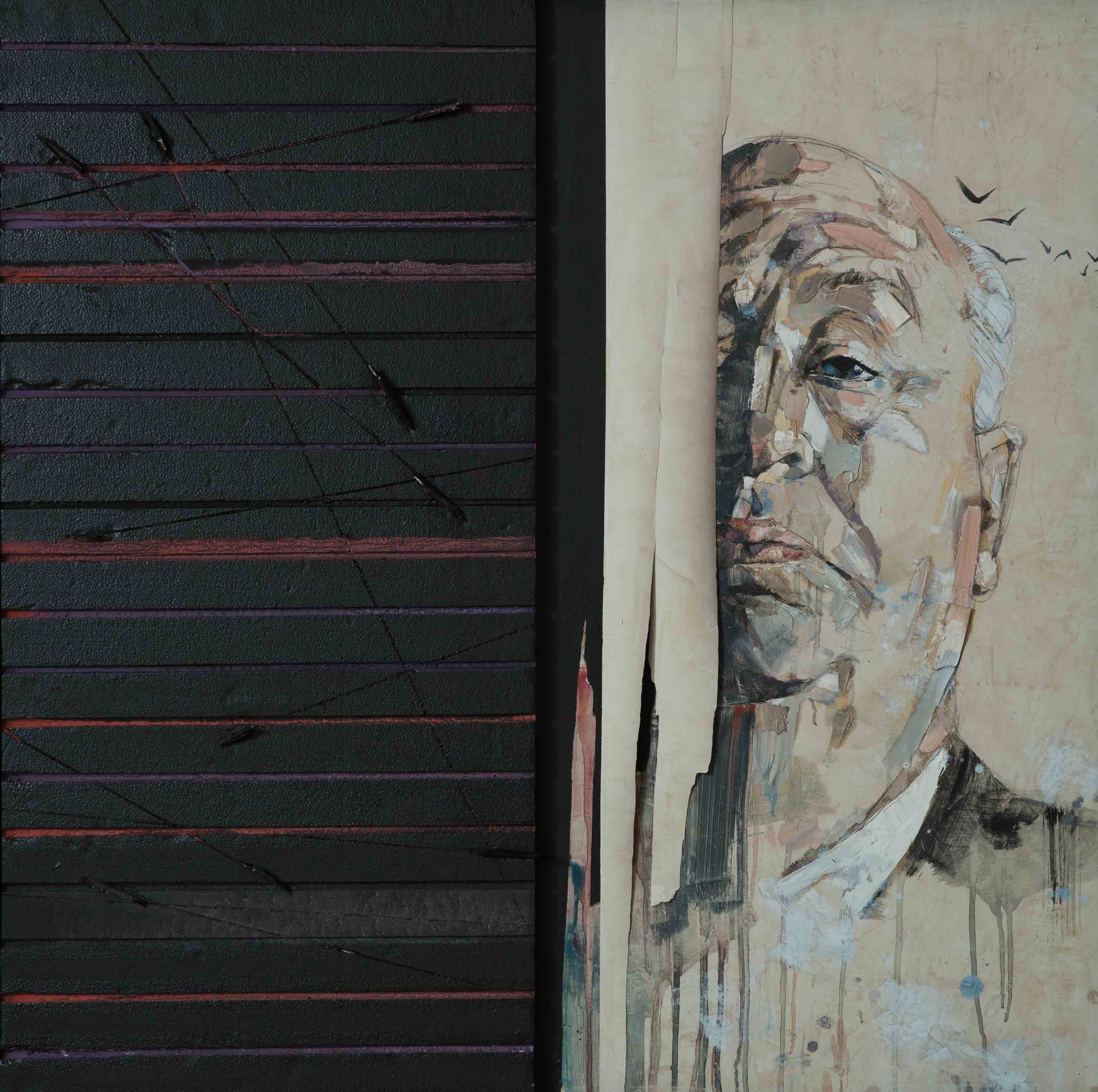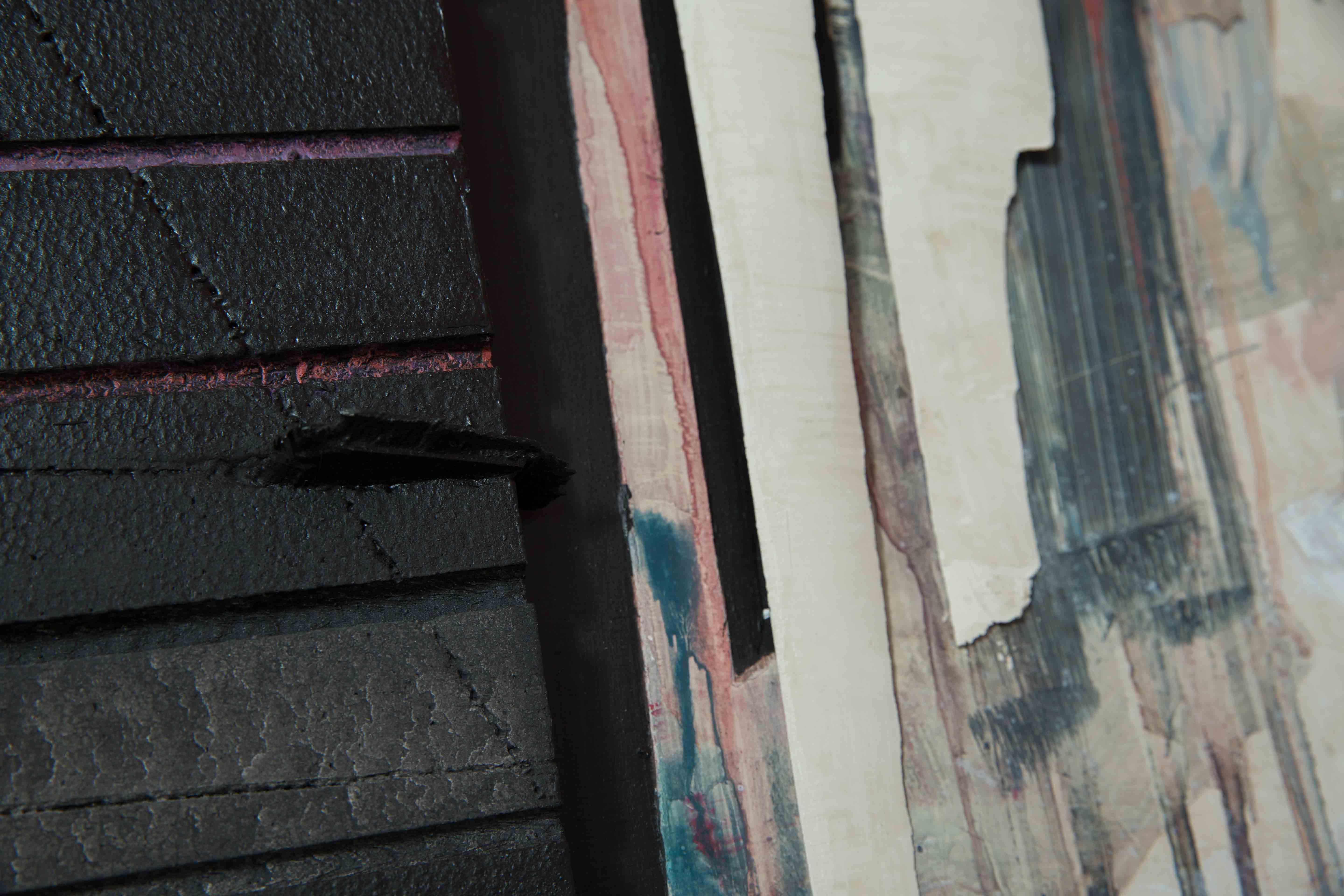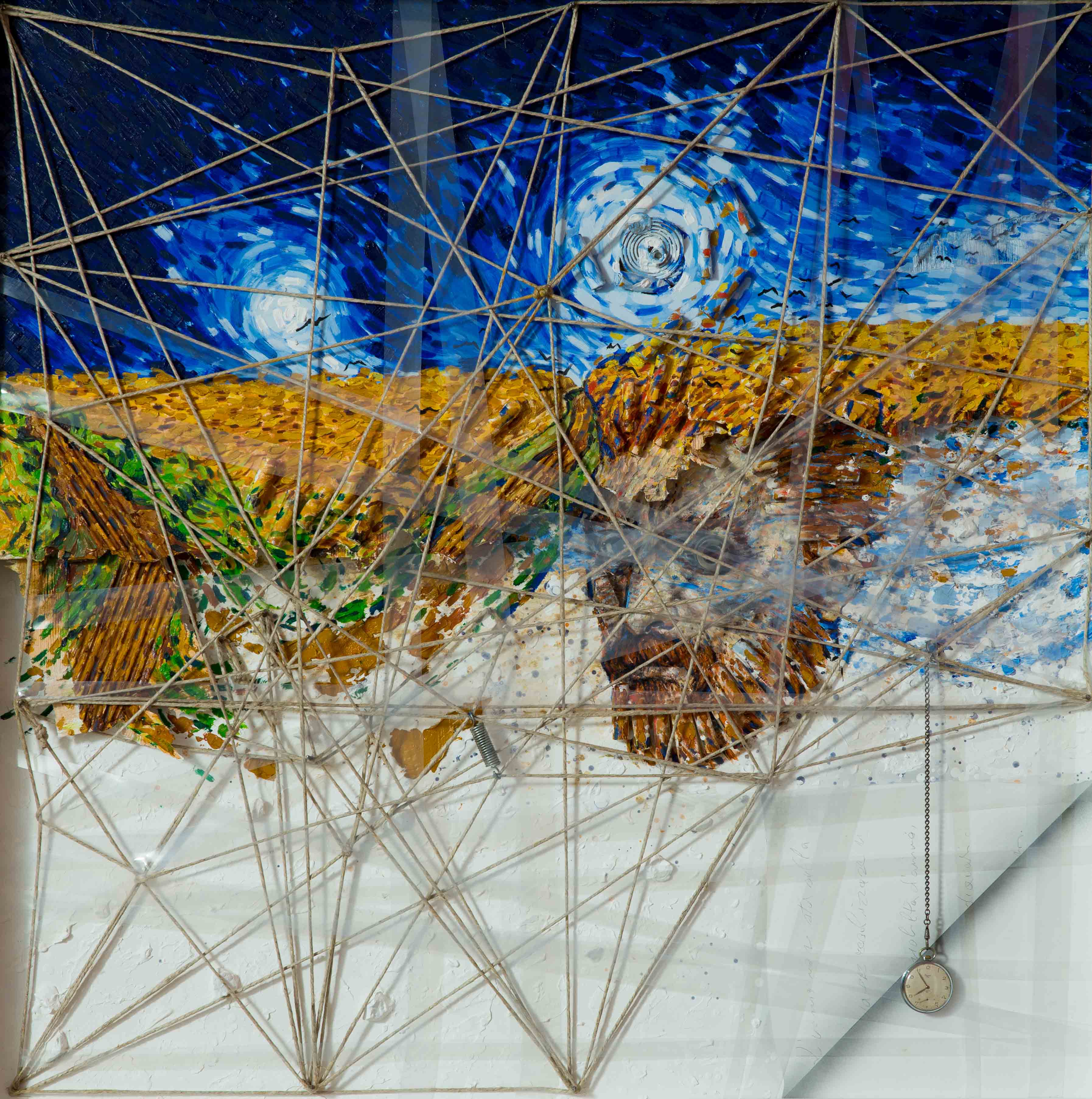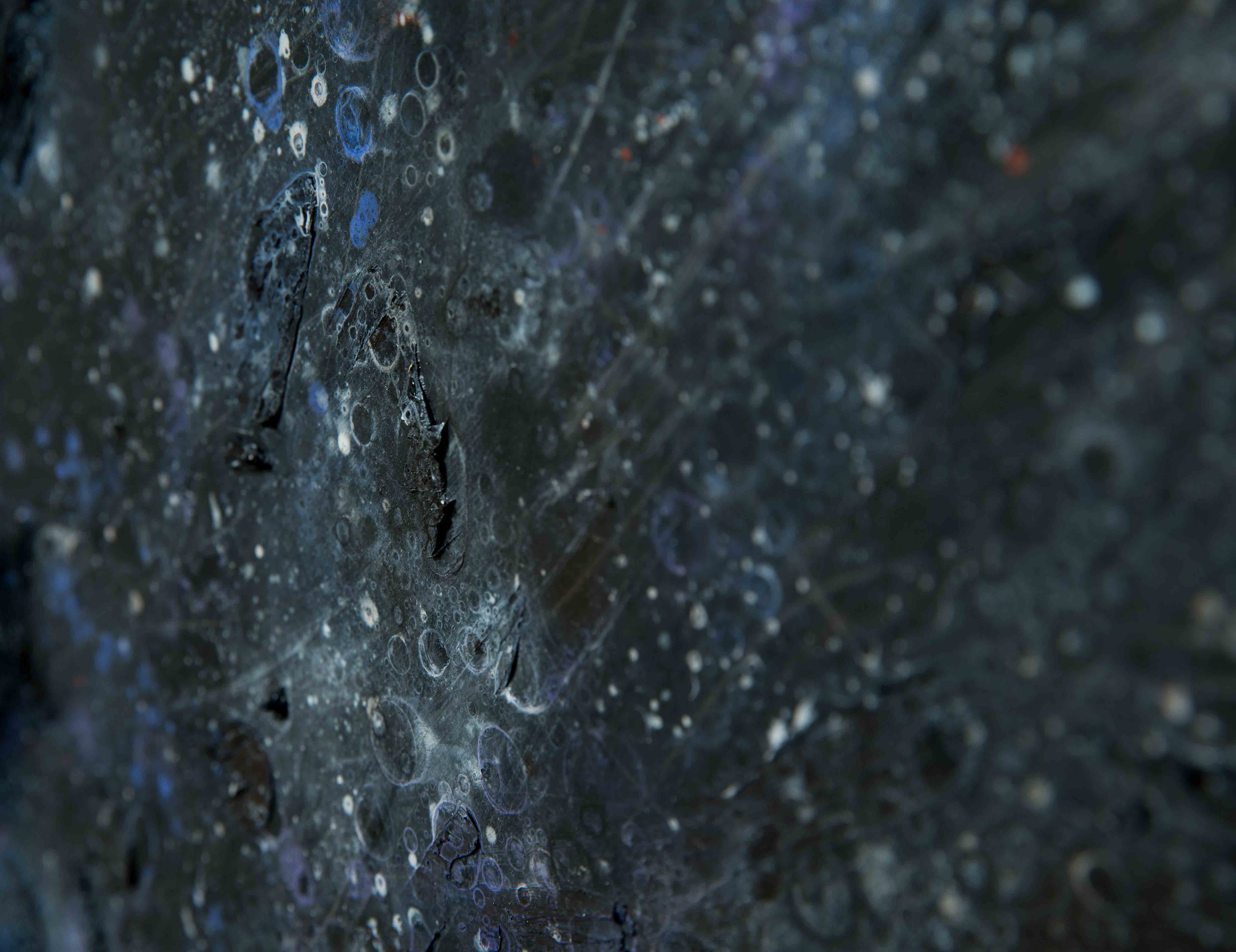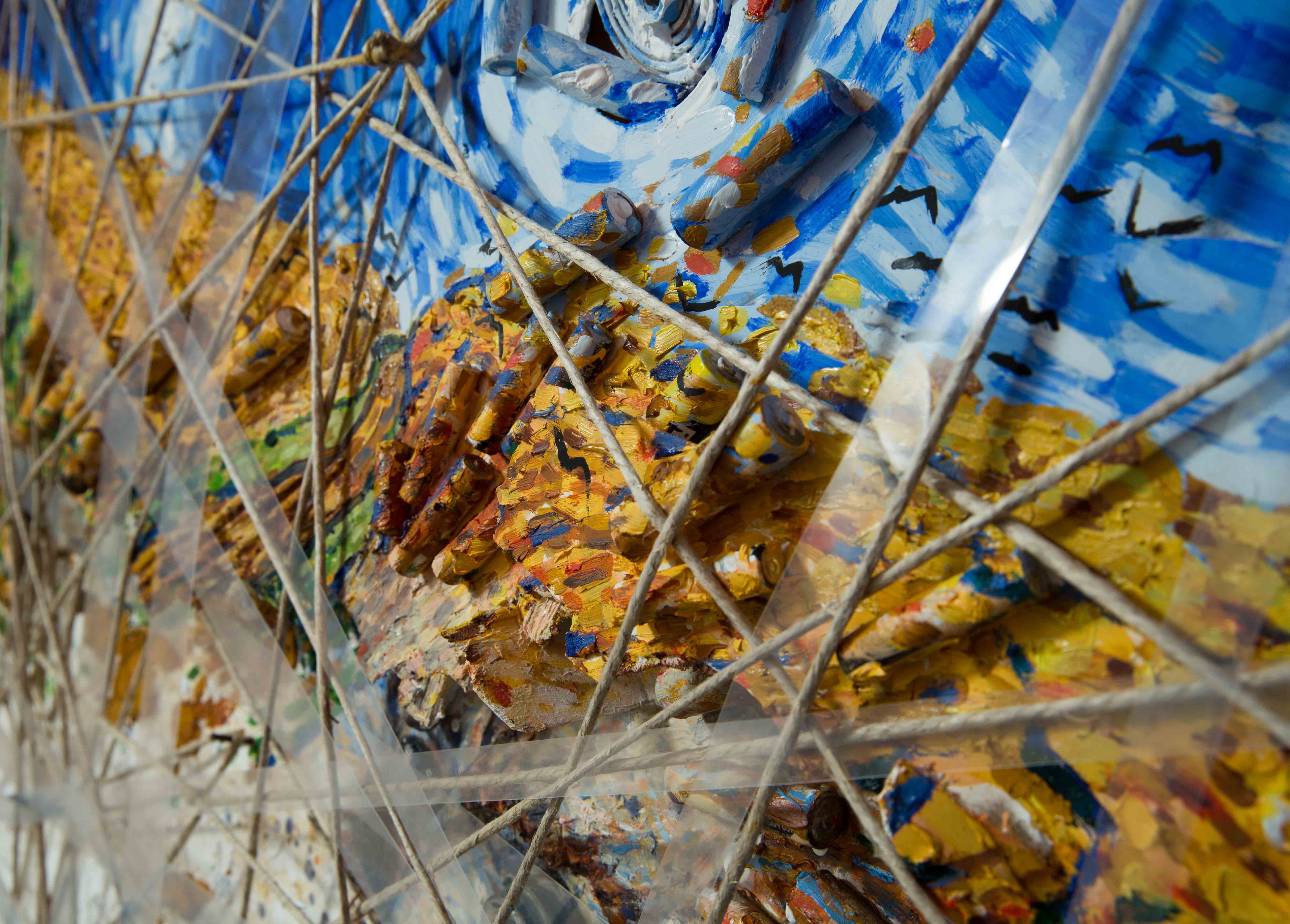The material is alive. It is in turn the subject, it vibrates.
Impressed in the material is the Idea that becomes Entity = Id – Entity. To this very type of Id – Entity, I have devoted over twenty years of patient research that ranged from the informal to realism, from painting to the plastic arts, from assemblage to the ready-made, finally arriving at something that incorporated it all in a different light, probably more sensitive to my bond with myself in a future projection, certainly more aware of the potentialities that could range through any field of the visual arts with practically unlimited developments. I have given a precise name to this identity: GenS or generative stratification, transitions of emotional memory, oxymorons of the impermanent and invisible. The intention is to remove the very concept of Painting with its intrinsic values and methodologies, as well as its definitions of objectivity/nonobjectivity now categorized by the history of art into stylistic movements and trends. GenS is an acronym coined to define a style, a personalized communication language; GenS consists of stratifications/removals with various materials that generate more or less recognizable images through the contents of memory. This language, essentially with roots in sculpting and painting, differs from all the others in that it is a series of sequential actions carried out on the image and material, actions not necessarily mediated by logic (sedimentations and alterations of the material, assemblies, combustion, engraving, etc.) resulting in the creation of unique works consisting of infinite poly-composite variables.
GenS incorporates various types of language already in use in the twentieth century (combining – painting, assemblage, use of obsolete objects and recovered materials) but establishes a different relationship with the materials used. They undergo transformation processes by virtue of a ‘final unity’ that completely cancels out their identity – classifying them and making them recognizable as such – making them take on a plastic-emotional value in becoming anatomical parts, intuitive space, anamorphoses of emotional realities. In GenS, the general aspect is also less conceptual and much more structured, conceived and experienced with the valuable nature of research that investigates the qualities of the “thing” without ever becoming a method. Instead there is discovery and wonder at every step, where the very definition of “work” as a product of creativity can be replaced with transition. The stratification assumes some initial traces that allow the intuition to take on an embryonic conformation, to then generate constructive or subtractive sequential actions through the use of any material, tool, or element, until the work takes on its final identity.
This identity is never completely established due to its basically osmotic nature, potentially always open to new hybridizations, even over time and with later revisions at the discretion of the author who defines its maturation. Another important factor is its uniqueness, and the primary indispensable subject – object connection; GenS does not foresee production in series (a determining factor in the Pop and Neo pop art revolution from the Warhol Factory to Koons) inasmuch as the creation of the work is indispensably tied to the emotional sensibility of the author who decides to develop it through progressions that are impossible to foreseeably count on, being constrained to suggestions of form, colour and material that are generated at different times, in relation to different contexts and subjects.
By virtue of these prerequisites, the intervention of intermediaries is not only impossible but also improper due to the very nature of these creative processes; if we wish to make a conjecture, the term Gens in Latin is synonymous with lineage, something that is attributable to an original root, which could be generically extended to doing – that is, to those values linked to a particular and precious manual expertise now almost extinct because of the technological advances – but also to being, the universal phenomenon of creation; from terrestrial stratification to that of plants and animals which, when focused on the human species, is accomplished through the multiplication of muscular tissues, tendons and epidermises on the skeletal structure. Most biological processes develop through the stratification of tissue. This parallel between the stratification processes contemplated in nature and others in art, shifts artistic creation closer to the real creation that occurs in nature by creating a continuity, a bridge between man and the universe, between microcosm and macrocosm, already begun in Humanism and then renounced with the birth of modernity and the consequent affirmation of machines as the means for producing mass media. GenS is a style of being and representing, free of definitions that have by now been categorized by the history of art into specific movements and trends which generate unique phenomena of perceptual oscillation by way of an initial impulse that comes from superficial factors of aesthetic sensitization, which are then propagated to the inner tissue of emotional memory with chain reactions; a hybrid process that uses an initial surface trigger – aesthetics – then fostering the multiplication of individual internal content. A new language of sensory communication through the image, linked to factors of thought, action and communication that distinguish it from all the others.


